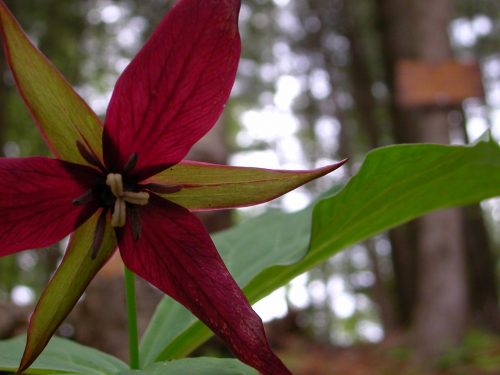
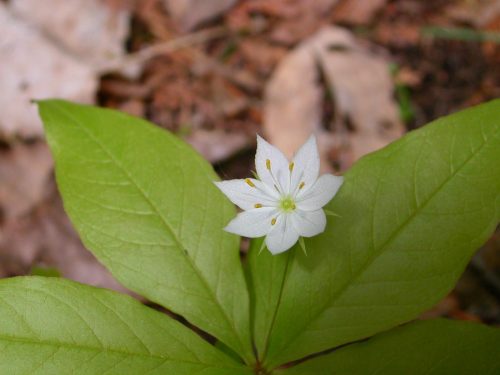



I remember my mother one day giving me this very typical (for her) advice: “Be sure to wash your celery good. I was reading the other day that celery is extremely dirty and people should be more careful.”
To which I had to reply: “Where do you read these things?”
Well, I was reading the other day that termites like heavy metal music. Yes, I read it on the Internet, but there’s so much stuff on the Internet that you have to know what to look for.
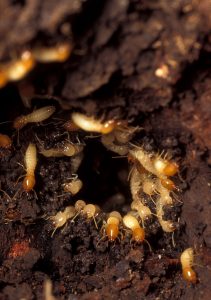
The article didn’t say whether termites show taste in heavy metal – whether they like Queen and Jethro Tull but hate KISS – but researches inferred that termites prefer this music since they chew faster when they hear it. According to Erlich Pest Control Blog, rock is ideal work music for termites due to “the frequency of 2.5KHz outputs for bass and electric guitars, which are distinctive of the rock genre.”
Mammals can have idiosyncratic tastes in music. Dolphins purportedly love Radiohead. In Tracking and the Art of Seeing, Paul Rezendes describes a raccoon who “would often come in when the man was playing Bach on his stereo. As soon as the record was over, the raccoon would leave.”

I used to have a cat who liked loud classical music, the kind with lots of horns and cymbals. She would lay next to a boombox playing Wagner or The William Tell Overture and cry if it was turned off. She’s dead now, but in Misha’s memory I would like to share this rendition of Tchaikovsky’s 1812 Overture, her favorite.
Trees are starting to bud where I live, and the birds have arrived. I went to Crown Point this week to watch the birds being banded. I’ve driven over the Crown Point Bridge hundreds of times but have never stopped here.
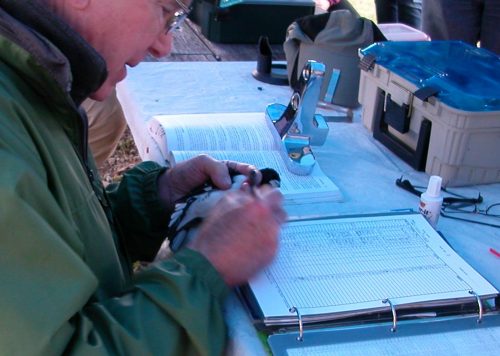
Banding a Rose Breasted Grosbeak. Birds are measured, then sex and age is recorded.

Savannah Sparrow.
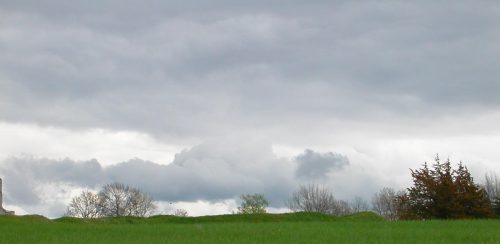
It had rained early in the morning, and the cloud shapes were interesting.

After the long winters here, even dandelions are beautiful.

I liked this tree. Spring is unrolling slowly this year.

Crown Point Bridge from New York to Vermont.

It has finally begun to feel like spring where I live, even though it was snowing this morning when I arose. The trees are not leafing yet, but the maples are budding, and animal life is conspicuous. In the past week, I have seen or heard the Barred Owl, Short-eared Owl, Cooper’s Hawk, Broad-winged Hawk, Osprey, Pileated Woodpecker, and the drumming wing feathers of the courting Ruffed Grouse.
One particularly welcome sight was a Little Brown Bat that sailed by my left shoulder on a dirt road near the village. I haven’t seen spring daytime bats in years. When the Little Brown Bat emerges from hibernation, she hunts during the day for insects which are inactive at night in cool weather. I used to see groups of bats flittering in the midday sun in early spring, but that changed years ago. White-nose Syndrome was first discovered in upstate New York in 2007 and has since spread throughout North America. A few species are predicted to become extinct, though the Little Brown Bat has a chance since her numbers were so high and her colonies so widespread to begin with.
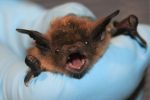
I hoped that this was a sign that the disease has run its course and the Little Brown Bat is recovering, but my Internet search only revealed that White-nose is spreading to places far from the original sighting, like southern Texas. Still, I might be one of the first to notice signs of recovery, if that is occurring. “One swallow does not a summer make,” and one bat is not a colony, but I am hopeful.
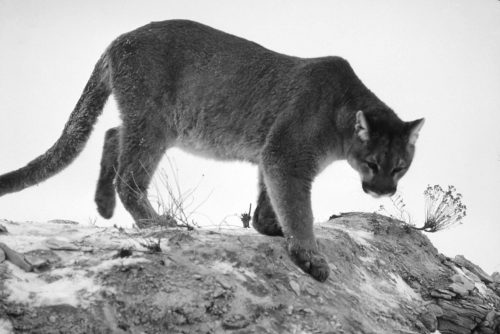
This excerpt, about meeting a cougar on a vision quest, is from Divining with Animal Guides: Answers from the world at hand.
I decided I would do a vision quest. I would go out on my own, build a fire, and instead of sleeping I would stay up all night and have visions.
I chose the dark moon for my journey. I walked a few miles along a deserted beach, with cliffs along the edge that had small caves and alcoves. When I reached a sheltered place I pulled firewood out of my backpack, gathered kindling along the beach, built a small fire, and in the approaching twilight commenced scrying into the flames. I didn’t have any visions.
I sat there a long time, getting up only to add more fuel. It began spitting rain and I became chilled even with the fire. I felt silly, shivering all by myself in a deserted place with a car less
than five miles away and a warm bed within a few hours’ drive. “This is boring,” I said to myself. I gathered my belongings and scattered the fire. As I stamped out the last embers, I had a vision.
A fat Chinese Buddha appeared, so rotund that I could not discern the outline of his body within my psychic frame of reference. I intuitively understood that he appeared to me thus to
show that he was bigger than I could envision. The limits of his influence were beyond the scope of my understanding.
The Buddha raised his hand in a gesture of protection and the apparition dissolved. I commenced my journey home.
As I trekked northward, the cliffs at my right and the ocean to my left, I discovered it was not raining at all; the fine droplets were from an unusually rough tide. How had I blotted out the sound of that surf? I realized that I was now in danger of being cut off from dry land; cliffs to one side of me with water butting up against them. Though it was very dark, I put my flashlight in my backpack because I needed both hands to scramble over the slippery rocks. I felt angry with myself for having bumbled into such a dangerous situation.
Finally the cliffs ended and the beach opened up. I had made it. I unloaded my backpack and retrieved my flashlight.
I was now only two miles from the car, two rather slow miles over sand or a short brisk walk via a trail close by. The logical option was to take the trail, but I felt an unexplained reluctance. It was one of those feelings that don’t make sense at the time, but you understand later. I was sopping wet from struggling with the surf, and I was rattled, so despite my misgivings, the trail won out.
I practically ran along the narrow path, so I was very close before I saw her. She was huge, the largest carnivorous beast I had confronted in the wild. She appeared confused. She moved a few steps from the beam of my flashlight and stood there, staring at me.
“You’re supposed to run away,” I said helpfully. The conventional wisdom was that cougars would not attack humans unless cornered, though they might possibly eat children. Many well- publicized deaths from unprovoked mountain lions have occurred since, but this was the prevailing belief at the time. I was not reassured by this while standing face-to-face with my cougar, however, because I am not a large woman. I thought to myself, “I hope this cougar understands that I’m a grown-up and not a child.”
“Listen, you’re blocking the path,” I reasoned. “Turn and follow this other path, or run back the way you came. I have to go in this direction because my car is there.”
The mountain lion took a few steps forward, slightly left of my shoulder.
“Okay, I give you the path,” I said quickly. “I’ll go another way.” I took a small step backward and shone my flashlight directly in the animal’s eyes. I took another slow step backward, and another, and another. I began shining the flashlight away, then back in her eyes, then away, then back, rationalizing this would interfere with her ability to focus. She remained still.
As I finally turned away, I let out the loudest, most terrifying scream I could muster, just to give her second thoughts about following me. “Take that, you big scream machine,” I thought.
My relationship with wilderness changed that night. After my third cougar encounter I still went out by myself, sometimes after dark, but I interacted with my environment in a different way. Hearing an unfamiliar sound I would investigate not only out of curiosity, but also out of concern for safety. I remained vigilant; I became cautious. Magical protection was no longer an abstract concept. Once there was a girl who roamed the wilderness alone at night, aware that there were mountain lions in the woods and completely unafraid. I am no longer that girl.
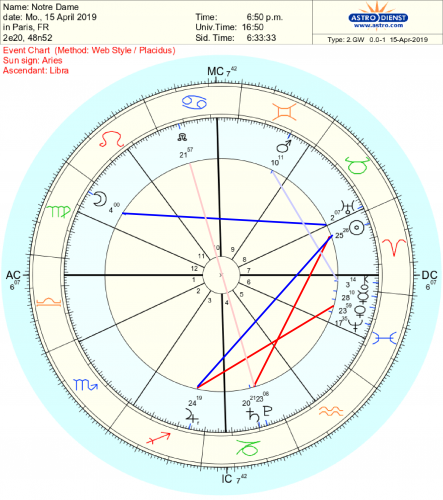
In the wake of the fire that gutted Notre Dame Cathedral in Paris on Monday, there have been many articles and blog posts describing the spectacular blaze as well as the tumultuous history of the 850 year old cathedral. I’m going to interpret some astrological data for the event.
I don’t have a time for the dedication of the building, so I’m going to look at general astrological data as the fire started. According to Paris police, the fire was discovered at 6:50 p.m. local time on April 15. The fire could (and probably did) start earlier than this, but since this is an old wooden building, and therefore a tinder box, it is doubtful that it smoldered for long. Moon sign is probably correct.
Events of far reaching destruction and change are generally driven by outer planets – Pluto, Chiron, Jupiter, and (especially) Uranus. Inner planets Sun, Moon, Mercury, Venus, and Mars trigger the timing of the event.
Looking at the outer planets, using sign-specific orb of 5 degrees or less, there is a hard aspect (a square) between a Pluto-Saturn conjunction in Capricorn and the Sun in Aries. Saturn is the planet of karma and slow, difficult growth. Pluto is a planet of transformation, rebirth, and inevitable change. This difficult conjunction reflects uncomfortable events happening in the world in general right now. Again, these planets are squaring the Sun. Squares generate energy through resistance, and in this case the square involves a fire sign, Aries.
There is another square involving Jupiter in its home fire sign of Sagittarius and a Mercury-Venus conjunction. Again, this is triggering conflict, resistance, and energy.
While squares generate energy through resistance, there has to be accommodating aspects for that energy to be expressed. In this case the planet most associated with sudden, disruptive change, Uranus, trines the planet closest to the Earth, the Moon. This is the aspect that facilitated the flames. This, and a trine between Jupiter and the Sun, both in their home fire signs.
An accommodation of destructive energy is reflected to a lesser extent in the sextile between Chiron, an asteroid also associated with deep change, and the aggressive planet Mars. The 9th House placement of Mars is significant, since this house is associated with religion and government. Of course the Ascendant is not completely reliable here, since it is impossible to know exactly when the fire started, but even pushing the time back to 5:00 p.m. keeps Mars in the 9th House.
The astrological data in the event chart is potential, not predictive, since it describes influences on the whole earth at the time in question. Looking at planetary transits in the context of a chart specific to the Cathedral could shed additional information.
Here is another excerpt from Divining with Animal Guides.

Crocodiles have a reputation for being smart. A significant facet of their intelligence is their ability to learn through observation. Crocodiles take a keen interest in the habits of wildlife along the river and plan their predation strategy accordingly. They seem to anticipate daily schedules and migration patterns. Sometimes they hunt cooperatively, using combined strength to drown a large animal or pull it apart. They may form two separate groups and herd fish into an ambush. They remain still and hidden for long periods of time, then move with lightning speed when it’s time to strike. They are long-lived animals, which might be another reason crocodile goddess Neith is considered the oldest deity.
Wealthy Egyptians liked to keep crocodiles as pets. A household crocodile was a pampered creature, given a courtyard pond for lounging and freedom to explore the house. Having the croc around brought the family fertility, wealth, protection and general good luck.
The temple crocodile was treated as the living representation of the crocodile god, usually but not always Neith’s son Sobek. As with any deity, the crocodile god lived in lush surroundings, entertained by temple musicians, and wore bracelets and body piercings of the most exquisite workmanship. When a divine crocodile died, he would be mummified like any great leader and given a funeral. Pet crocodiles were also mummified, according to the family’s means. During the last millennium BCE, some temples kept a stock of crocodiles to be sold as sacrifices to Sobek, and these crocodiles were also mummified, occasionally with their babies, although not with the same precision as a divine crocodile or a pet croc. From this temple stock, a new living deity would be chosen and given the same name as the crocodile now making his journey to eternal life.
There are many questions about this process that the Egyptians left unanswered. Questions like, how do you tell the difference between a divine crocodile and an ordinary one? Outside culinary donations, how do you know when a live crocodile approves of your offering, since they appear to have only one facial expression? And, most importantly, who takes a job as a crocodile body piercer?

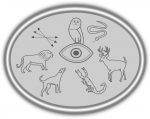
The following is an excerpt from a chapter in Invoking Animal Magic.
Western traditions regard the owl with ambivalence. She is a repository of wisdom, but a harbinger of death or other unwelcome news. Not only Shakespeare, but Spenser and Chaucer describe the owl as presager of doom, making the verdict of the English literary giants unanimous. Yet the owl only goes visiting if the messages are unclaimed. When the situation becomes dicey enough for her to hunt down the recipient, can she be blamed if the news is dire?
Distinctive in tone, varied in repertoire, hidden under cover of night, owl talk strikes the listener as steeped in significance. In talking to their own kind, owls can be establishing territory, courting, migrating, defending themselves or calling for mother. But of course we know they are mostly talking to us. Not only do owls carry messages, they carry secrets. Spells from archaic Roman and English sources use the owl to pry secrets from a sleeping victim. The owl is an emblem, by admission or reputation, of various secret societies, including the Masons, the Bohemian Grove and the Illuminati. On the corner of the one dollar bill there is a minute figure that could be an owl, which people who subscribe to conspiracy theories attribute to an occult fraternity among the Founding Fathers.
The owl’s most conspicuous feature is her large eyes, which give the impression of seeing everything. Most birds, including other birds of prey, obtain a field of vision approaching 360 degrees by having eyes located on either side of the head. The owl’s forward facing eyes give her excellent depth perception— important for seeing in low light—and make her appear more human. Her flexible neck allows her to turn her face to the rear. She needs large eyes and wide head movements because her eyes are fixed and cannot move, hence the staring that unnerves some people. Her immovable eyes seem supremely confident and all-knowing. Since the owl sees so clearly into the night, she is credited with the comprehension of death, evil, uncomfortable truths, disquieting outcomes and everything else we place in the rubric of “shadow.”

Spring is when most Witches celebrate the maiden goddess Persephone and her reunion with her mother Demeter. Persephone is the Queen of the Underworld and Demeter is the Goddess of Grain.
According to the standard version of the myth, the child-goddess Persephone is picking flowers with her nymph friends when the god Hades emerges from his underworld kingdom and abducts the maiden, forcing her to become his wife. The distraught mother Demeter retreats into her sorrow, refusing to tend her plants. The earth dries up.
Alarmed at the dying vegetation, the remaining gods unite to pressure Hades to relinquish the maiden goddess. Hades relents and agrees to release Persephone, provided she has eaten nothing while in the land of the dead. Of course this is trickery, because Persephone has eaten one pomegranate seed. A compromise is reached, whereby Persephone spends one-third of the year in the underworld and two-thirds of the year above ground.
While this myth explains the fertile and fallow periods of the agricultural calendar quite well, there are parts of the story that don’t fit. How is the Goddess of Death able to spend most of her time in the land of living? Gods and goddesses go back and forth between these worlds all the time, but welcoming the spirits of the dead isn’t a job you can just pack up and leave, except maybe for a long weekend. If Persephone is integral to the world below, and the poets insist that she is, then surely she can’t live in Greece two-thirds of the year. She would be considered a full-time resident for tax purposes (and husband Hades has a ton of assets).
Many scholars resolve this confusion with the conjecture that Persephone has been syncretized with another goddess, who is Demeter’s daughter in the myth. Since Persephone is often addressed in Classical texts by the title Kore, which means “Maiden,” this inferred goddess is called Kore. Separating Persephone into two personas goes a long way to clearing up the confusion.
But there is another problem. Persephone’s cult, the Eleusinian Mysteries, welcomed her back to the land of the living at the Autumn Equinox, rather than in the spring. In a lot of ways this makes sense, since the spring wildflower season in the Aegean is succeeded by hot dry months inhospitable to agriculture. Recall that Kore-Persephone is picking wildflowers when she is abducted. At the same time, Classical texts often place Kore’s return as the spring. This is most commonly considered the season of the world reborn. Perhaps the timing of the myth has been modified to apply to other localities or later agricultural practices.
When does Kore-Persephone leave and when does she return? It probably depends not only on hemisphere, but climate. In low-desert places in the northern hemisphere, most agricultural activity ceases as summer approaches. Or perhaps it depends on whether you live by an agricultural calendar at all. If you follow an academic calendar, summer is a time of rest and productivity reboots in the autumn. Spring is when most Witches celebrate the maiden goddess Persephone and her reunion with her mother Demeter.
Sources:
Robert Graves, The Greek Myths, Compete Edition, London: Penguin Books, 1960.
Homeric Hymn to Demeter, Gregory Nagy, trans. Center for Hellenic Studies at Harvard University.
Patricia Monaghan, The Book of Goddesses and Heroines. St. Paul, MN: Llewellyn Books, 1990.
Persephone. Theoi.com.
